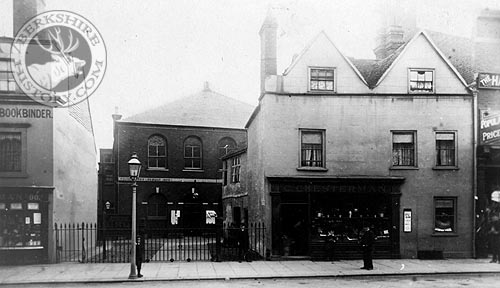 |
 |
|||
|
 Nonconformists Nonconformistsin Reading An Introduction Until the Protestant Reformation of the 16th century, the English people followed a single teaching and worship in religion. After the Reformation, however, differences arose. Not only were there still many who clung to the old Roman Catholic faith, but the attempt to include all those who followed the reformed teaching in one national church proved a failure. The disturbances in England in the 17th century were chiefly caused by the conflict between Laud and the Church of England, on the one hand, and the Puritans on the other. When, in 1660, after the Civil War and the Commonwealth, the monarchy was restored and the Church of England again obtained the upper hand. Severe laws were now passed against all who would not conform to the teaching and worship of the Church of England. Yet these harsh laws did not destroy the nonconformists, and congregations were then formed which in many cases have continued till today. Three religious bodies now existing in
Reading first arose in the great days of the Puritans. The Congregational Church in
Broad Street, formerly known as the Independent Chapel, was first established about two hundred and seventy years ago. The Independents, indeed, even trace their origin to the days of Elizabeth, but it does not appear that they existed in Reading before 1655. The Independents were then very powerful in the country and, among them, was the Lord Protector Cromwell himself. The first Independent pastor in Reading seems to have been Thomas Juice who, in 1662, was turned out of his position at Worcester, as a minister of the Church of England, because, like two thousand other ministers, he could not accept the principles of the Church of England as laid down by the Act of Uniformity of that year. A consequence of his courageous refusal to accept what he believed to be wrong was that he lost his income. He seems to have come to Reading in 1665. The laws pressed hard upon him and we are told that, on one occasion, he had to hide from his persecutors in a bark rick belonging to a tanner in Mill Lane. During the same period, a third religious body arose in Reading. This was a branch of the Society of Friends, sometimes called Quakers. The founder of the Friends' Society was George Fox and he tells us, in his journal, that he came to Reading in 1655. He held a meeting in an orchard, which he describes as ‘a glorious meeting.’ In 1658, George Fox stayed, for ten weeks, in Reading, exhorting the people. He was here again several times before his death, for he spent his life travelling about the country preaching to meetings of Friends. In 1670, when he came to Reading, he found that most of the Friends had been thrown into prison. He visited them there and only just escaped imprisonment himself. Edited from W.M. Childs' "The Story of the Town of Reading" (1905)
|
|||
| © Nash Ford Publishing 2017. All Rights Reserved. | ||||





